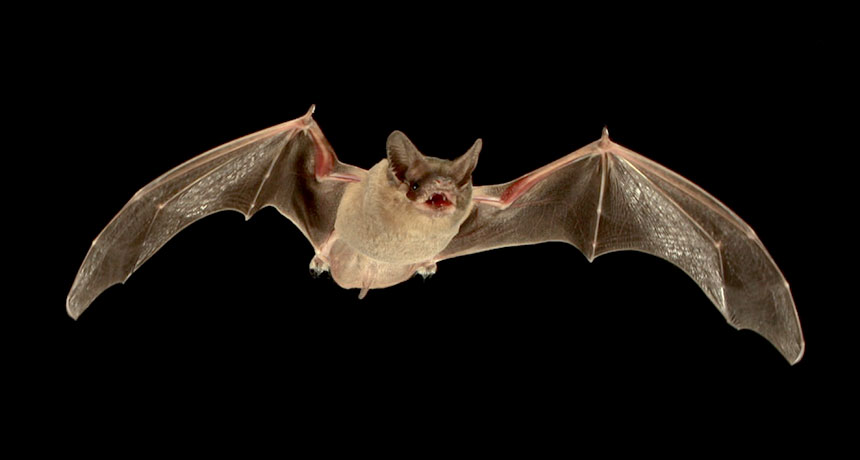Bat signals jammed
When hunting, these flying mammals may deliberately interfere with each other’s calls

Mexican free-tailed bats jam each other’s echolocation signals. This can up the competition in finding — and snatching — moths out of the night sky.
Nickolay Hristov
Share this:
- Share via email (Opens in new window) Email
- Click to share on Facebook (Opens in new window) Facebook
- Click to share on X (Opens in new window) X
- Click to share on Pinterest (Opens in new window) Pinterest
- Click to share on Reddit (Opens in new window) Reddit
- Share to Google Classroom (Opens in new window) Google Classroom
- Click to print (Opens in new window) Print
By Susan Milius
“Hey, batter, batter, batter… swing!”
A little chatter in baseball can distract a player batting for the opposing team. Now, researchers report that some bats — the flying mammals, that is — also run interference when engaged in their own game of hit or miss.
Mexican free-tailed bats (Tadarida brasiliensis) can sabotage the calls made by others of their species. This hurts the chance those other bats will capture the moths they had been after, say Aaron Corcoran and William Conner. Both biologists work at Wake Forest University in Winston-Salem, N.C.
Jamming causes a competing bat to strike out more often while hunting insects, they reported November 7 in the journal Science. That can help even the score when as many as 1 million Mexican free-tailed bats from a single roost are flitting through the night sky, competing for food.
While hunting, bats send out special calls. Then they listen for an echo as that call bounces off moths or other flying insects. This is called echolocation. It’s roughly equivalent to the underwater sonar used by submarines. Dolphins, whales, shrews and even some birds also use echolocation to find prey.
Mexican free-tailed bats have a repertoire of at least 15 different calls. (The sounds bats make are too high-pitched for human ears. To hear the calls, scientists must use special equipment to lower the pitch.) One sound that the bats make is a call that gets faster and faster as the expert hunters close in on an insect meal. Scientists call this bat sound a “feeding buzz.”
The scientists captured this feeding buzz while recording various calls the bats made while hunting at locations in Arizona and New Mexico. The researchers noticed that bats made another particular sound only when a competing bat was buzzing in for the kill. The team suspected the bats were making this special sound to jam one another’s feeding buzz.
Follow-up observations, along with playing recorded jamming calls, revealed that well-timed jamming can foil a competitor’s attempts to capture a moth up to 85.9 percent of the time.
Scientists had never before found evidence of an echolocating animal jamming its own kind. Nor is it clear if other bat species also jam one another’s calls. However, Corcoran and Conner previously showed how some moths can jam bat signals.
Three video clips filmed outdoors at night show Mexican free-tailed bats (the larger white shapes) hunting insects tethered to fishing line (smaller white shapes). The first clip shows a successful midair catch, and the rest show how jamming foils the attempts. (Video and audio are slowed to 1/20th of their natural speeds.) Credit: A. Corcoran
Power words
bat A type of winged mammal comprising more than 1,100 separate species — or one in every four known species of mammal.
echo To bounce back. For example, sound bouncing off walls of a tunnel, and returning to their source. Radio waves emitted above the surface can also bounce off the bedrock underneath an ice sheet — then return to the surface.
echolocation (in animals) A behavior in which animals emit calls and then listen to the echoes that bounce back off of solid things in the environment. This behavior can be used to navigate and to find food or mates. It is the biological analog of the sonar used by submarines.
jam (verb) To block a sound or interfere with the ability to interpret that sound.
repertoire A stock of regularly performed songs.
roost A place where winged animals temporarily rest or sleep. The term also refers to the act of resting on a branch or above-ground perch.







